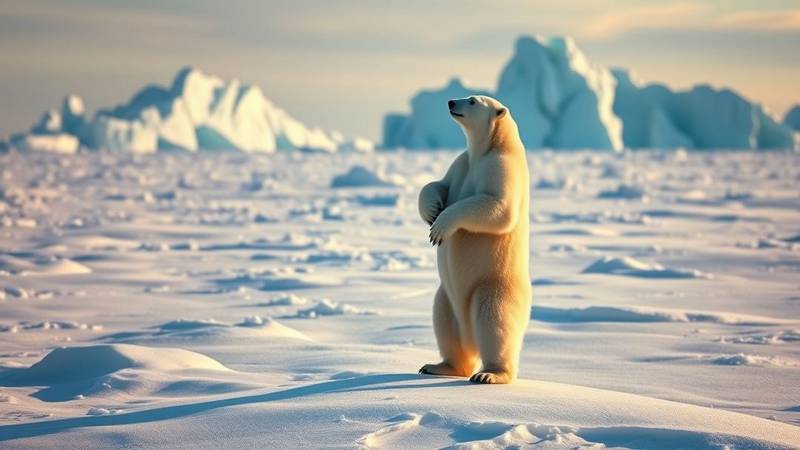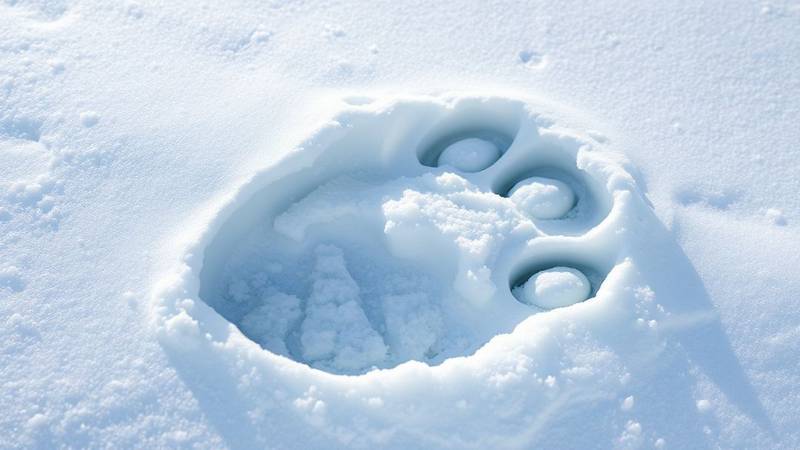Polar Bear Size: The Arctic's Apex Predator Dimensions
The polar bear (Ursus maritimus) is renowned not only as the Arctic's apex predator but also as the world's largest land carnivore. Its sheer size is a testament to its adaptation to one of Earth's most challenging environments. Understanding their dimensions—length, height, and other physical attributes—provides insight into their hunting prowess and survival strategies.

From massive paws designed for traversing ice and snow to an imposing stature, every aspect of a polar bear's size contributes to its dominance in the Arctic food web.
Overall Dimensions: Length and Height
Polar bears exhibit significant sexual dimorphism, with males being considerably larger than females. Their dimensions are truly impressive.
Length
Adult male polar bears typically measure from 2.4 to 3 meters (7 feet 10 inches to 9 feet 10 inches) in length from the tip of the nose to the tip of their short tail. Some exceptional males have been recorded exceeding 3 meters.
Adult females are smaller, generally ranging from 1.8 to 2.4 meters (5 feet 11 inches to 7 feet 10 inches) in length.
Height at the Shoulder
When standing on all fours, an adult male polar bear's shoulder height can be between 1.22 to 1.6 meters (4 feet to 5 feet 3 inches). Females are proportionally shorter.
Height Standing on Hind Legs
Perhaps most impressively, when a large adult male polar bear stands on its hind legs, it can reach a towering height of up to 3 to 3.5 meters (10 to 11.5 feet) or even more in exceptional cases. This gives them a commanding view and an intimidating presence.
Male Length
(7'10" - 9'10")
Female Length
(5'11" - 7'10")
Shoulder Height (Male)
(4' - 5'3")
Standing Height (Male)
(Up to 11.5 ft+)
Size of Specific Features: Paws, Claws, and Tail
Beyond overall length and height, other physical dimensions contribute to the polar bear's survival.
Paw Size
Polar bear paws are enormous, reaching up to 30 centimeters (12 inches) in diameter. These large paws act like snowshoes, distributing their weight to prevent them from sinking into deep snow or breaking through thin ice. The undersides are covered with rough papillae and non-retractile, slightly curved claws that provide excellent traction on ice.
Claw Length
Their claws, while not as long as those of grizzly bears, are thick, strong, and sharp, typically measuring around 5-10 centimeters (2-4 inches). They are crucial for gripping ice and holding onto prey.
Tail Length
In contrast to their massive bodies, polar bears have a relatively short tail, usually 7 to 13 centimeters (3 to 5 inches) long. A short tail helps to minimize heat loss in the frigid Arctic temperatures.

Built for the Arctic
Every dimension, from the broad paws to the short tail, is an evolutionary adaptation that enhances the polar bear's ability to thrive in its icy domain. Their size is not just about dominance but about efficient survival.
What Determines a Polar Bear's Size?
While genetics lay the foundation for a polar bear's potential size, several other factors play a role:
- Sex: As noted, males are significantly larger than females. This is the most prominent factor.
- Age: Polar bears continue to grow until they reach full maturity, typically around 5-6 years for females and 8-10 years for males. They may reach their peak size slightly later.
- Nutrition: Access to abundant food, particularly fat-rich seals, during their developmental years is crucial for reaching maximum genetic potential in size. Malnourished bears will likely be smaller.
- Geographic Variation: Some studies suggest slight regional variations in average size, possibly linked to the productivity of their marine environment and prey availability.
- Individual Genetics: Just like in humans, some individuals are naturally predisposed to be larger or smaller than others within their sex group.
How Size Aids Arctic Adaptation and Survival
A polar bear's large size offers several advantages in the Arctic:
- Thermoregulation: Larger animals have a smaller surface area to volume ratio, which helps them conserve body heat more effectively in cold environments (Bergmann's rule).
- Hunting Prowess: Their size and strength allow them to break through snow dens to reach seal pups and overpower adult seals, which can weigh up to 160 kg (350 lbs) or more.
- Fasting Endurance: A larger body can store more fat reserves, enabling them to survive longer periods without food, especially important as sea ice patterns change.
- Dominance and Mating: Larger males are often more successful in competing for mates.
However, large size also means a greater need for calories. The dependence on a high-fat diet makes them particularly vulnerable to disruptions in their food chain, primarily caused by the loss of sea ice due to climate change. A decline in the average size of polar bears in a population can be an indicator of environmental stress.
Majestic Dimensions Under Threat
The magnificent size of the polar bear is a product of millennia of evolution in the Arctic. Maintaining this size is crucial for their continued survival, but this is increasingly challenged by a rapidly warming world impacting their hunting grounds.
